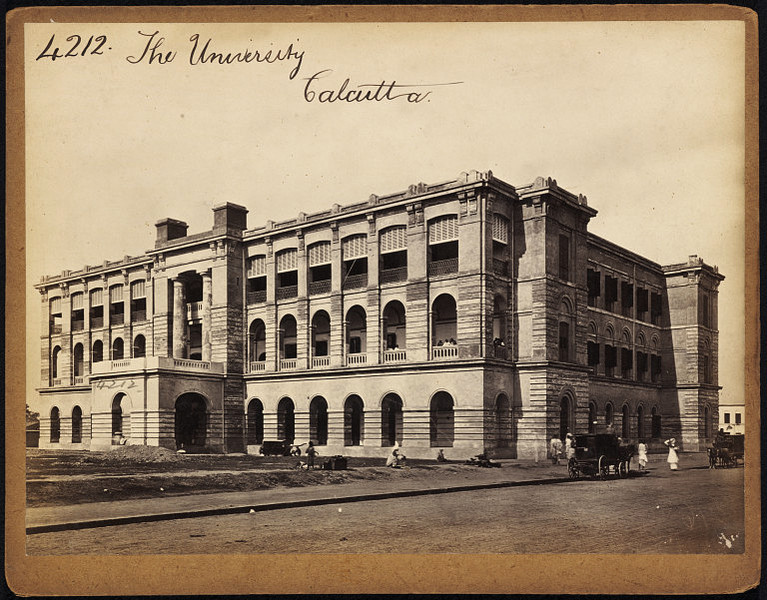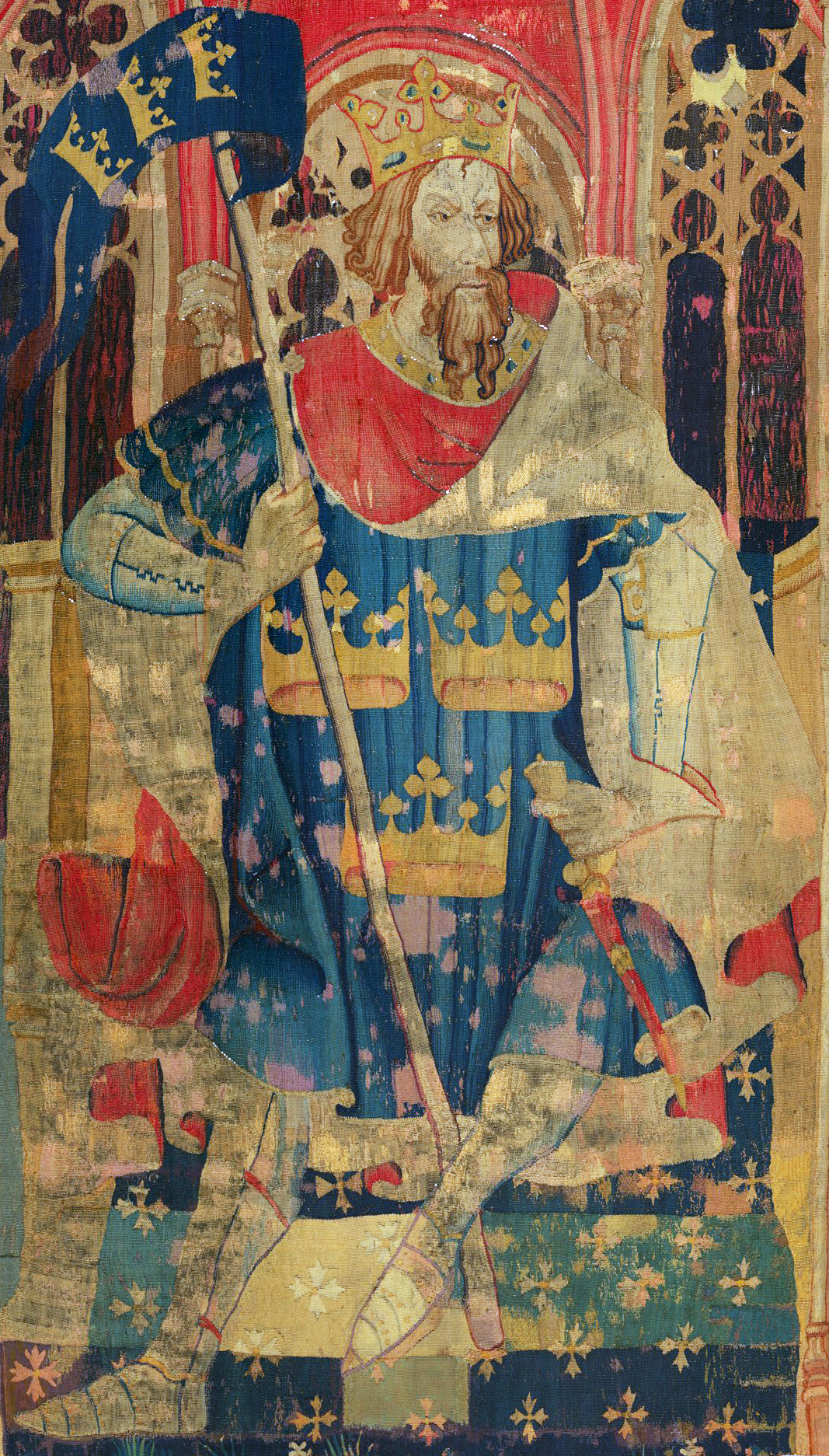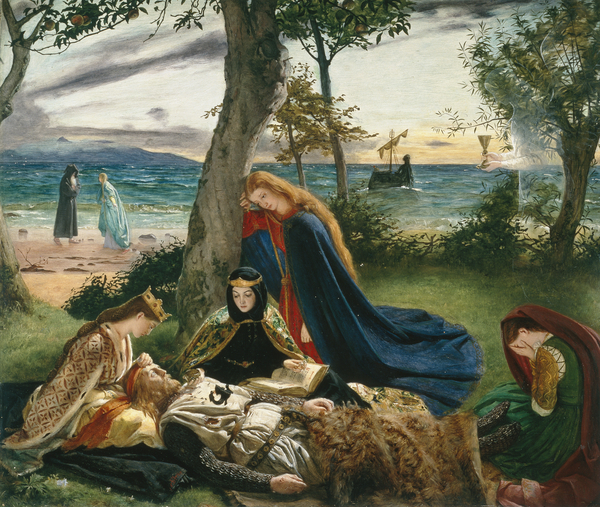|
Arthur Avalon
Sir John George Woodroffe (15 December 1865 – 16 January 1936), also known by his pseudonym Arthur Avalon, was a British Orientalist whose extensive and complex published works on the Tantras, and other Hindu traditions, stimulated a wide-ranging interest in Hindu philosophy and yoga. Life Woodroffe was the eldest son of James Tisdall Woodroffe and his wife Florence, daughter of James Hume. James Woodroffe was Advocate-General of Bengal and Legal Member of the Government of India, a Justice of the Peace, and a Knight of St. Gregory. John was educated at Woburn Park School and the University College, Oxford, where he took second classes in jurisprudence and the Bachelor of Civil Law examinations. He was called to the Bar by the Inner Temple in 1889, and in the following year was enrolled as an advocate of the Calcutta High Court. He was soon made a Fellow of the Calcutta University and appointed Tagore Law Professor. He collaborated with Ameer Ali in a widely used textboo ... [...More Info...] [...Related Items...] OR: [Wikipedia] [Google] [Baidu] |
James Lafayette
James Lafayette was the pseudonym of James Stack Lauder (1853–1923).Anon. (1990). He was a late Victorian and Edwardian portrait photographer, and managing director from 1898 to 1923 of a company in Dublin specializing in society photographs, Lafayette Ltd. In 1887, he became the first Irish photographer to be granted a royal warrant.Meadows (2004) Collections While thousands of images were credited to Lafayette studios, only those 649 photographs which were registered for copyright bear his signature as author. These are now held in the Public Record Office, in Kew, London. The Lafayette Collection at London's Victoria & Albert Museum consists of 3,500 glass plate and celluloid negatives.Meadows (1990). A further collection of 30,000 to 40,000 nitrate negatives is at London's National Portrait Gallery. Further collections are in the Royal Archives at Windsor Castle; and in private hands in Dublin Dublin is the capital and largest city of Republic of Ireland, Ireland ... [...More Info...] [...Related Items...] OR: [Wikipedia] [Google] [Baidu] |
Calcutta University
The University of Calcutta, informally known as Calcutta University (), is a Public university, public State university (India), state university located in Kolkata, Calcutta (Kolkata), West Bengal, India. It has 151 affiliated undergraduate colleges and 16 institutes in Kolkata and nearby areas. It was established on 24 January 1857 and is the oldest multidisciplinary university of Indian Subcontinent and Southeast Asian Region. Today, the university's jurisdiction is limited to a few districts of West Bengal, but at the time of its establishment it had a catchment area ranging from Kabul to Myanmar. It is accredited as an "A" grade university by the National Assessment and Accreditation Council (NAAC). The university has a total of fourteen campuses spread over the city of Kolkata and its suburbs. As of 2020, 151 colleges and 21 institutes and centres are affiliated with CU. The university was fourth in the Indian University Ranking 2021 list, released by the National Institu ... [...More Info...] [...Related Items...] OR: [Wikipedia] [Google] [Baidu] |
Burne-Jones
The Burne-Jones Baronetcy, of Rottingdean in the County of Sussex, and of The Grange in the Parish of Fulham in the County of London, was a title in the Baronetage of the United Kingdom. It was created on 4 May 1894 for the artist and designer Edward Burne-Jones. He was closely associated with the later phase of the Pre-Raphaelite movement The Pre-Raphaelite Brotherhood (PRB), later known as the Pre-Raphaelites, was a group of English painters, poets, and art critics, founded in 1848 by William Holman Hunt, John Everett Millais, Dante Gabriel Rossetti, William Michael Rossett .... He was succeeded by his eldest son, the second Baronet, who was also a painter. The title became extinct on his death in 1926. Burne-Jones baronets, of Rottingdean and of The Grange (1894) * Sir Edward Coley Burne-Jones, 1st Baronet (1833–1898) * Sir Philip Burne-Jones, 2nd Baronet (1861–1926) References * {{DEFAULTSORT:Burne-Jones Extinct baronetcies in the Baronetage of the United Ki ... [...More Info...] [...Related Items...] OR: [Wikipedia] [Google] [Baidu] |
The Last Sleep Of Arthur In Avalon
''The Last Sleep of Arthur in Avalon'' is a painting by the English artist Edward Burne-Jones, started in 1881. The massive painting measures 279 cm × 650 cm, and is widely considered to be Burne-Jones's ''Masterpiece, magnum opus''.Waters, p. 42. The painting was originally commissioned from Burne-Jones by his patron George Howard, 9th Earl of Carlisle, to hang on a wall in the library of Naworth Castle. Howard shared Burne-Jones's affection for the King Arthur, Arthurian legend and left the choice of topic to the artist.Mancoff, p. 118. Burne-Jones started working on it in 1881 and continued for 17 years. Within this period, he also designed the stage set for the play ''King Arthur'' by J. Comyns Carr that premiered in London in January 1895.Wildman, p. 315. The 1880s brought the deaths of Burne-Jones's close friends. As they died, the artist experienced mounting isolation and painful awareness of his own mortality.Mancoff, p. 113. Immersed in his work, Burne-Jones i ... [...More Info...] [...Related Items...] OR: [Wikipedia] [Google] [Baidu] |
Masterpiece
A masterpiece, , or ; ; ) is a creation that has been given much critical praise, especially one that is considered the greatest work of a person's career or a work of outstanding creativity, skill, profundity, or workmanship. Historically, a "masterpiece" was a work of a very high standard produced by an apprentice to obtain full membership, as a "master", of a guild or academy in various areas of the visual arts and crafts. Etymology The form ''masterstik'' is recorded in English or Scots in a set of Aberdeen guild regulations dated to 1579, whereas ''masterpiece'' is first found in 1605, already outside a guild context, in a Ben Jonson play. ''Masterprize'' was another early variant in English. In English, the term rapidly became used in a variety of contexts for an exceptionally good piece of creative work, and was "in early use, often applied to man as the 'masterpiece' of God or Nature". History Originally, the term ''masterpiece'' referred to a piece of work ... [...More Info...] [...Related Items...] OR: [Wikipedia] [Google] [Baidu] |
King Arthur
According to legends, King Arthur (; ; ; ) was a king of Great Britain, Britain. He is a folk hero and a central figure in the medieval literary tradition known as the Matter of Britain. In Wales, Welsh sources, Arthur is portrayed as a leader of the Sub-Roman Britain, post-Roman Britons in battles against the Anglo-Saxons in the late-5th and early-6th centuries. He first appears in two early medieval historical sources, the ''Annales Cambriae'' and the ''Historia Brittonum'', but these date to 300 years after he is supposed to have lived, and most historians who study the period Historicity of King Arthur, do not consider him a historical figure.Tom Shippey, "So Much Smoke", ''review'' of , ''London Review of Books'', 40:24:23 (20 December 2018) His name also occurs in early Welsh-language literature, Welsh poetic sources, such as ''Y Gododdin''. The character developed through Welsh mythology, appearing either as a great warrior defending Britain from human and supernatura ... [...More Info...] [...Related Items...] OR: [Wikipedia] [Google] [Baidu] |
Avalon
Avalon () is an island featured in the Arthurian legend. It first appeared in Geoffrey of Monmouth's 1136 ''Historia Regum Britanniae'' as a place of magic where King Arthur's sword Excalibur was made and later where Arthur was taken to recover from being gravely wounded at the Battle of Camlann. Since then, the island has become a symbol of Arthurian mythology, similar to Arthur's castle of Camelot. Avalon was associated from an early date with mystical practices and magical figures such as King Arthur's sorceress sister Morgan, cast as the island's ruler by Geoffrey and many later authors. Certain Briton traditions have maintained that Arthur is an eternal king who had never truly died but would return as the "once and future" king. The particular motif of his rest in Morgan's care in Avalon has become especially popular. It can be found in various versions in many French and other medieval Arthurian and other works written in the wake of Geoffrey, some of them also linkin ... [...More Info...] [...Related Items...] OR: [Wikipedia] [Google] [Baidu] |
Pen Name
A pen name or nom-de-plume is a pseudonym (or, in some cases, a variant form of a real name) adopted by an author and printed on the title page or by-line of their works in place of their real name. A pen name may be used to make the author's name more distinctive, to disguise the author's gender, to distance the author from their other works, to protect the author from retribution for their writings, to merge multiple persons into a single identifiable author, or for any of several reasons related to the marketing or aesthetic presentation of the work. The author's real identity may be known only to the publisher or may become common knowledge. In some cases, such as those of Elena Ferrante and Torsten Krol, a pen name may preserve an author's long-term anonymity. Etymology ''Pen name'' is formed by joining pen with name. Its earliest use in English is in the 1860s, in the writings of Bayard Taylor. The French-language phrase is used as a synonym for "pen name" ( means 'pen') ... [...More Info...] [...Related Items...] OR: [Wikipedia] [Google] [Baidu] |
Shaktism
Shaktism () is a major Hindu denomination in which the God in Hinduism, deity or metaphysics, metaphysical reality is considered metaphorically to be a woman. Shaktism involves a galaxy of goddesses, all regarded as different aspects, manifestations, or personifications of the divine feminine energy called ''Shakti''. It includes various modes of worship, ranging from those focused on the most worshipped Durga, to gracious Parvati, and the fierce Kali. After the decline of Buddhism in India, various Hindu and Buddhist goddesses were combined to form the Mahavidya, a Pantheon (religion), pantheon of ten goddesses. The most common forms of the Mahadevi worshipped in Shaktism include: Durga, Kali, Saraswati, Lakshmi, Parvati, and Tripura Sundari. Also worshipped are the various Gramadevatas across the Indian villages. Shaktism also encompasses various Tantra#Śaiva and Śākta tantra, tantric sub-traditions, including Vidyapitha and Kulamārga. Shaktism emphasizes that intense ... [...More Info...] [...Related Items...] OR: [Wikipedia] [Google] [Baidu] |
Yoga
Yoga (UK: , US: ; 'yoga' ; ) is a group of physical, mental, and spiritual practices or disciplines that originated with its own philosophy in ancient India, aimed at controlling body and mind to attain various salvation goals, as practiced in the Hindu, Jain, and Buddhist Buddhism, also known as Buddhadharma and Dharmavinaya, is an Indian religion and List of philosophies, philosophical tradition based on Pre-sectarian Buddhism, teachings attributed to the Buddha, a wandering teacher who lived in the 6th or ... traditions. Yoga may have pre-Vedic period, Vedic origins, but is first attested in the early first millennium BCE. It developed as various traditions in the eastern Ganges basin drew from a common body of practices, including Vedas, Vedic elements. Yoga-like practices are mentioned in the ''Rigveda'' and a number of early Upanishads, but systematic yoga concepts emerge during the fifth and sixth centuries BCE in ancient India's sannyasa, ascetic and ... [...More Info...] [...Related Items...] OR: [Wikipedia] [Google] [Baidu] |
Indian Philosophy
Indian philosophy consists of philosophical traditions of the Indian subcontinent. The philosophies are often called darśana meaning, "to see" or "looking at." Ānvīkṣikī means “critical inquiry” or “investigation." Unlike darśana, ānvīkṣikī was used to refer to Indian philosophies by classical Indian philosophers, such as Chanakya in the Arthashastra, Arthaśāstra. A traditional Hindu classification divides āstika and nāstika schools of philosophy, depending on one of three alternate criteria: whether it believes the Vedas as a valid source of knowledge; whether the school believes in the premises of Brahman and Atman (Hinduism), Atman; and whether the school believes in afterlife and Deva (Hinduism), Devas. (though there are exceptions to the latter two: Mimamsa and Samkhya respectively). There are six major (āstika) schools of Hindu philosophy, Vedic philosophy—Nyaya, Vaisheshika, Samkhya, Yoga (philosophy), Yoga, Mīmāṃsā and Vedanta—and five ... [...More Info...] [...Related Items...] OR: [Wikipedia] [Google] [Baidu] |
Tantra
Tantra (; ) is an esoteric yogic tradition that developed on the India, Indian subcontinent beginning in the middle of the 1st millennium CE, first within Shaivism and later in Buddhism. The term ''tantra'', in the Greater India, Indian traditions, also means any systematic broadly applicable "text, theory, system, method, instrument, technique or practice". A key feature of these traditions is the use of mantras, and thus they are commonly referred to as Mantramārga ("Path of Mantra") in Hinduism or Mantrayāna ("Mantra Vehicle") and Guhyamantra ("Secret Mantra") in Buddhism. In Buddhism, the Vajrayana traditions are known for tantric ideas and practices, which are based on Indian Tantras (Buddhism), Buddhist Tantras. They include Tibetan Buddhism, Indo-Tibetan Buddhism, Chinese Esoteric Buddhism, Japanese Shingon Buddhism and Nepalese Newar Buddhism. Although Southern Esoteric Buddhism does not directly reference the tantras, its practices and ideas parallel them. In Bud ... [...More Info...] [...Related Items...] OR: [Wikipedia] [Google] [Baidu] |








